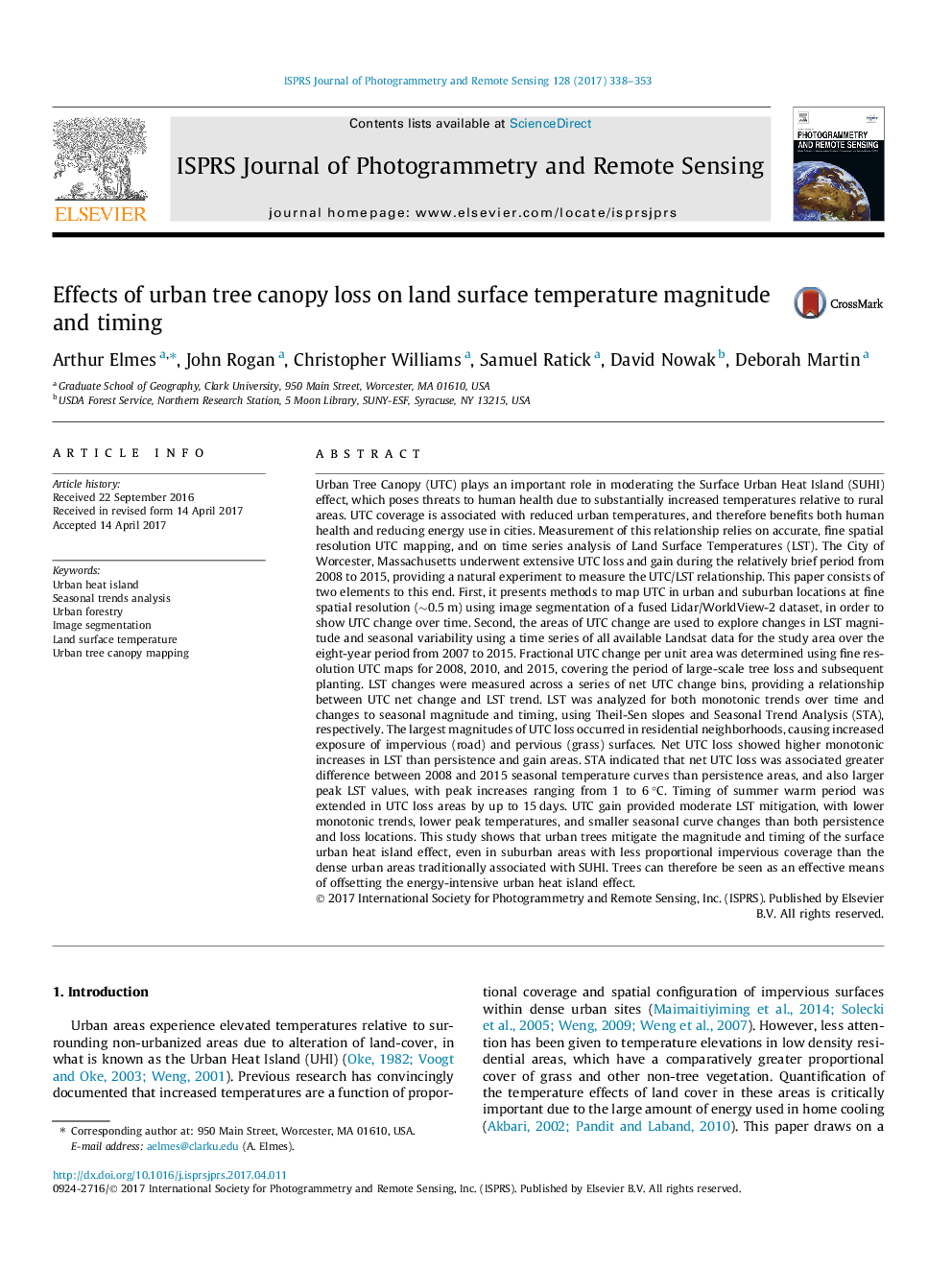| کد مقاله | کد نشریه | سال انتشار | مقاله انگلیسی | نسخه تمام متن |
|---|---|---|---|---|
| 4972871 | 1451246 | 2017 | 16 صفحه PDF | دانلود رایگان |
عنوان انگلیسی مقاله ISI
Effects of urban tree canopy loss on land surface temperature magnitude and timing
ترجمه فارسی عنوان
اثرات از دست دادن سایبان درخت شهری بر میزان درجه حرارت سطح زمین و زمان بندی
دانلود مقاله + سفارش ترجمه
دانلود مقاله ISI انگلیسی
رایگان برای ایرانیان
کلمات کلیدی
جزیره گرمایی شهری، تجزیه و تحلیل روند فصلی، جنگل شهری، تقسیم بندی تصویر، دمای سطح زمین، نقشه کشی درخت شهری،
موضوعات مرتبط
مهندسی و علوم پایه
مهندسی کامپیوتر
سیستم های اطلاعاتی
چکیده انگلیسی
Urban Tree Canopy (UTC) plays an important role in moderating the Surface Urban Heat Island (SUHI) effect, which poses threats to human health due to substantially increased temperatures relative to rural areas. UTC coverage is associated with reduced urban temperatures, and therefore benefits both human health and reducing energy use in cities. Measurement of this relationship relies on accurate, fine spatial resolution UTC mapping, and on time series analysis of Land Surface Temperatures (LST). The City of Worcester, Massachusetts underwent extensive UTC loss and gain during the relatively brief period from 2008 to 2015, providing a natural experiment to measure the UTC/LST relationship. This paper consists of two elements to this end. First, it presents methods to map UTC in urban and suburban locations at fine spatial resolution (â¼0.5 m) using image segmentation of a fused Lidar/WorldView-2 dataset, in order to show UTC change over time. Second, the areas of UTC change are used to explore changes in LST magnitude and seasonal variability using a time series of all available Landsat data for the study area over the eight-year period from 2007 to 2015. Fractional UTC change per unit area was determined using fine resolution UTC maps for 2008, 2010, and 2015, covering the period of large-scale tree loss and subsequent planting. LST changes were measured across a series of net UTC change bins, providing a relationship between UTC net change and LST trend. LST was analyzed for both monotonic trends over time and changes to seasonal magnitude and timing, using Theil-Sen slopes and Seasonal Trend Analysis (STA), respectively. The largest magnitudes of UTC loss occurred in residential neighborhoods, causing increased exposure of impervious (road) and pervious (grass) surfaces. Net UTC loss showed higher monotonic increases in LST than persistence and gain areas. STA indicated that net UTC loss was associated greater difference between 2008 and 2015 seasonal temperature curves than persistence areas, and also larger peak LST values, with peak increases ranging from 1 to 6 °C. Timing of summer warm period was extended in UTC loss areas by up to 15 days. UTC gain provided moderate LST mitigation, with lower monotonic trends, lower peak temperatures, and smaller seasonal curve changes than both persistence and loss locations. This study shows that urban trees mitigate the magnitude and timing of the surface urban heat island effect, even in suburban areas with less proportional impervious coverage than the dense urban areas traditionally associated with SUHI. Trees can therefore be seen as an effective means of offsetting the energy-intensive urban heat island effect.
ناشر
Database: Elsevier - ScienceDirect (ساینس دایرکت)
Journal: ISPRS Journal of Photogrammetry and Remote Sensing - Volume 128, June 2017, Pages 338-353
Journal: ISPRS Journal of Photogrammetry and Remote Sensing - Volume 128, June 2017, Pages 338-353
نویسندگان
Arthur Elmes, John Rogan, Christopher Williams, Samuel Ratick, David Nowak, Deborah Martin,
